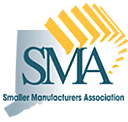CT Ranked #4 as More Students Succeed on AP Exams; Gap Widens for Latino, Black Students
/The College Board, in its annual report on the state of the Advanced Placement program – known to high school students as AP classes – determined that mean scores and overall participation in the AP exam both grew last year, but inequities in the availability of the exams and programs persists across socioeconomic and racial backgrounds. Connecticut ranked #6 nationally in the percentage of 2012 public high school graduates succeeding on AP exams, but disparities continued in Connecticut and nationwide in the number of minority students taking and succeeding in AP classes. The state ranked #4 in the nation for the largest change in the overall percentage of students scoring well on the AP Exam, from 15.5 percent in 2002 to 26.9 percent in 2012, a jump of 15.5 percent.
Data indicate that in Connecticut, however, the gap widened from 2011 to 2012 in the percentage of African-American students and Latino students in the graduating class who took AP classes. Ten states eliminated the gap for Latino students; three states did so for African-American students.
The publication Inside Higher Ed noted that the report designated “promoting equity” as a major goal for the AP program in the coming years, and although lack of equal access and opportunity remains an issue, the findings r eported several positive signs over the past year in this regard. The report states that in 2012, disparities in participation and success shrank in 30 states for African-American students and in 17 states for Latino students.
eported several positive signs over the past year in this regard. The report states that in 2012, disparities in participation and success shrank in 30 states for African-American students and in 17 states for Latino students.
Among the class of 2012, more than 300,000 students identified as having a high likelihood of success in AP did not take any recommended AP Exam. To succeed on an AP exam, students need to score a 3 or higher on a 5-point scale. Many colleges and universities offer college credit for passing scores. AP courses are offered in a variety of subjects, including math, science, foreign language, English and history.
According to the report, nationwide the number of high school graduates taking the AP exam in 2012 was 954,070, or 32.4 percent, up from 30.2 percent in 2011, and 18 percent a decade earlier, in 2002. Hundreds of thousands of academically prepared students with the potential to succeed in AP — including a disproportionately large percentage of underserved minority students — are graduating from high school without having participated in AP classes.
AP participation also increased among low-income graduates, who accounted for 26.6 percent of students who took at least one AP examination. This is an increase from 11.5 percent in 2003.
ctlatinonews.com cited ABC News Univision in reporting that more Latinos are taking the test than in previous years, according to the report, and more of them are succeeding. But the data revealed significant inequities in AP participation along racial/ethnic lines, with underserved minority students who demonstrated readiness for AP much less likely than their similarly prepared white and Asian/Asian American/Pacific Islander peers to experience AP course work.
Writing in the Miami Herald, Trevor Packer, Vice President of the Advanced Placement Program at The College Board, pointed out that “Under-represented minority students who show readiness to succeed in AP are less likely to actually take AP than their white and Asian peers. In AP math course work, for example, among every 10 students who are ready for an AP math course, 60 percen t of Asian students, 40 percent of white students, 30 percent of Latino and African-American students, respectively, and 20 percent of American Indian/Alaska Native students participate in the program.”
t of Asian students, 40 percent of white students, 30 percent of Latino and African-American students, respectively, and 20 percent of American Indian/Alaska Native students participate in the program.”
Why are many minority students not enrolled in advanced placement classes? One reason cited in the report is a lack of access. Many attend school where the coursework is simply not available. The report offers suggestions for improving access to AP courses, while noting that schools can run into obstacles such as a lack of funding or properly trained teachers. Schools need to do a better job of notifying students that they are eligible for the courses, the report says. Once students are enrolled, the report says that schools should provide support, in the form of peer-to-peer mentoring, counseling and tutoring.
Top 10 States in Percentage of 2012 Public High School Graduates Succeeding on AP Exams
- Maryland (29.6%)
- New York (28.0%)
- Massachusetts (27.9%)
- Florida (27.3%)
- Virginia (27.2%)
- Connecticut (26.9%)
- Maine (24.8%)
- California (24.7%)
- Colorado (24.2%)
- Vermont (22.8%)








































